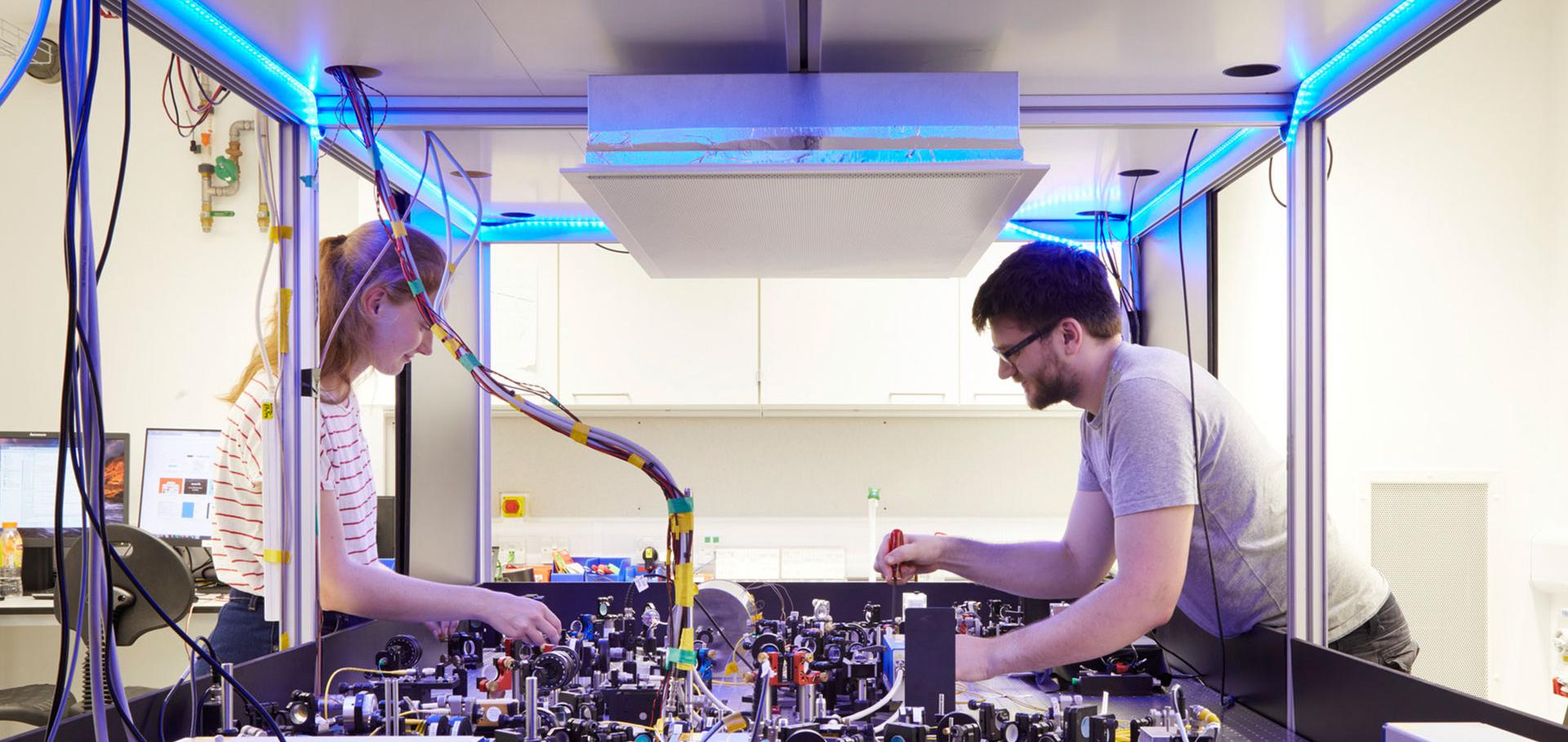Resonant excitation of plasma waves in a plasma channel
Physical Review Research American Physical Society 6:2 (2024) L022001
Abstract:
We demonstrate resonant excitation of a plasma wave by a train of short laser pulses guided in a preformed plasma channel, for parameters relevant to a plasma-modulated plasma accelerator (P-MoPA). We show experimentally that a train of N≈10 short pulses, of total energy ∼1J, can be guided through 110mm long plasma channels with on-axis densities in the range 1017-1018cm-3. The spectrum of the transmitted train is found to be strongly red shifted when the plasma period is tuned to the intratrain pulse spacing. Numerical simulations are found to be in excellent agreement with the measurements and indicate that the resonantly excited plasma waves have an amplitude in the range 3-10GVm-1, corresponding to an accelerator stage energy gain of order 1GeV.All-optical GeV electron bunch generation in a laser-plasma accelerator via truncated-channel injection.
Physical Review Letters American Physical Society 131:24 (2023) 245001
Abstract:
We describe a simple scheme, truncated-channel injection, to inject electrons directly into the wakefield driven by a high-intensity laser pulse guided in an all-optical plasma channel. We use this approach to generate dark-current-free 1.2 GeV, 4.5% relative energy spread electron bunches with 120 TW laser pulses guided in a 110 mm-long hydrodynamic optical-field-ionized plasma channel. Our experiments and particle-in-cell simulations show that high-quality electron bunches were only obtained when the drive pulse was closely aligned with the channel axis, and was focused close to the density down ramp formed at the channel entrance. Start-to-end simulations of the channel formation, and electron injection and acceleration show that increasing the channel length to 410 mm would yield 3.65 GeV bunches, with a slice energy spread ∼5×10^{-4}.Recovery time of a plasma-wakefield accelerator
Nature Springer Nature 603:7899 (2022) 58-62
Abstract:
The interaction of intense particle bunches with plasma can give rise to plasma wakes capable of sustaining gigavolt-per-metre electric fields, which are orders of magnitude higher than provided by state-of-the-art radio-frequency technology. Plasma wakefields can, therefore, strongly accelerate charged particles and offer the opportunity to reach higher particle energies with smaller and hence more widely available accelerator facilities. However, the luminosity and brilliance demands of high-energy physics and photon science require particle bunches to be accelerated at repetition rates of thousands or even millions per second, which are orders of magnitude higher than demonstrated with plasma-wakefield technology. Here we investigate the upper limit on repetition rates of beam-driven plasma accelerators by measuring the time it takes for the plasma to recover to its initial state after perturbation by a wakefield. The many-nanosecond-level recovery time measured establishes the in-principle attainability of megahertz rates of acceleration in plasmas. The experimental signatures of the perturbation are well described by simulations of a temporally evolving parabolic ion channel, transferring energy from the collapsing wake to the surrounding media. This result establishes that plasma-wakefield modules could be developed as feasible high-repetition-rate energy boosters at current and future particle-physics and photon-science facilities.Experimental study of extended timescale dynamics of a plasma wakefield driven by a self-modulated proton bunch
Physical Review Accelerators and Beams American Physical Society 24:1 (2021) 011301
Abstract:
Plasma wakefield dynamics over timescales up to 800 ps, approximately 100 plasma periods, are studied experimentally at the Advanced Wakefield Experiment (AWAKE). The development of the longitudinal wakefield amplitude driven by a self-modulated proton bunch is measured using the external injection of witness electrons that sample the fields. In simulation, resonant excitation of the wakefield causes plasma electron trajectory crossing, resulting in the development of a potential outside the plasma boundary as electrons are transversely ejected. Trends consistent with the presence of this potential are experimentally measured and their dependence on wakefield amplitude are studied via seed laser timing scans and electron injection delay scans.Acceleration of electrons in the plasma wakefield of a proton bunch.
Nature 561:7723 (2018) 363-367


